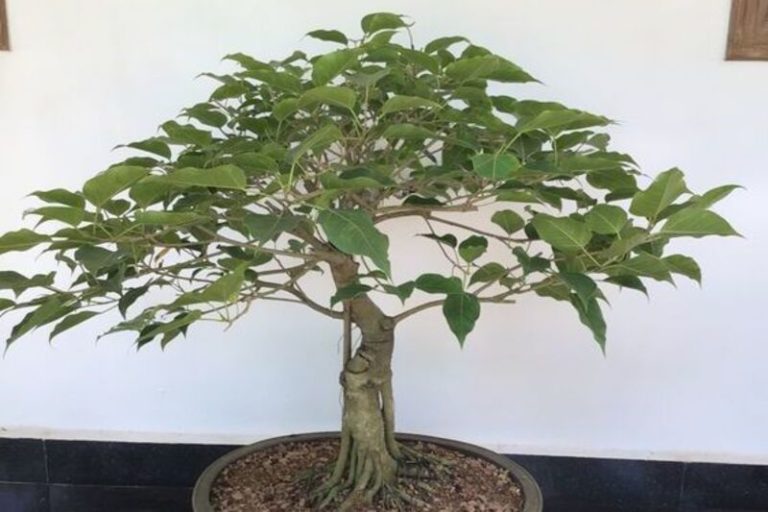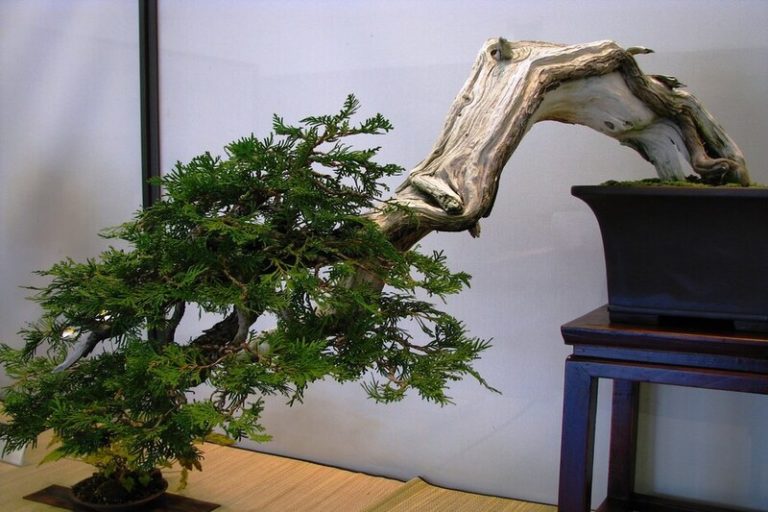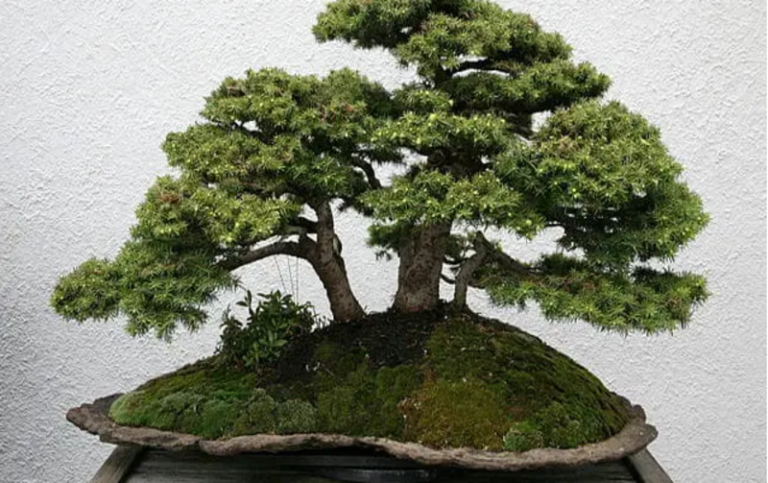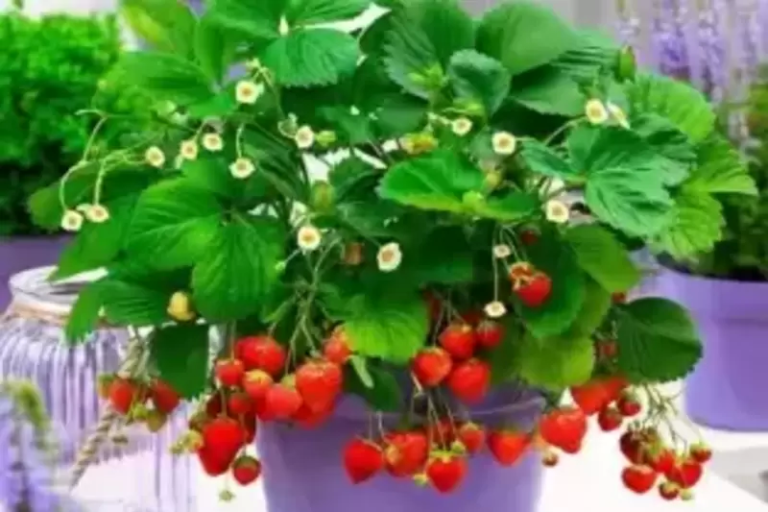Blue Jacaranda Bonsai: A Guide to Caring for and Displaying this Beautiful Tree
A Blue Jacaranda Bonsai might be the perfect addition to your garden if you’re seeking for something exotic and lovely. This article will describe the Blue Jacaranda Bonsai, its uses, and maintenance and display techniques.
What is a Blue Jacaranda Bonsai?
A Blue Jacaranda Bonsai, which is also called Jacaranda mimosifolia, is a beautiful tiny tree known for its bright blue-purple flowers and thin, fern-like leaves. It is possible to keep blue jacaranda bonsai trees indoors or outdoors, and people frequently cultivate them for their aesthetic value.
| Attribute | Information |
|---|---|
| Botanical Name | Jacaranda mimosifolia |
| Other Name | Blue Jacaranda |
| Native Area | South America (Argentina, Bolivia, Brazil, Paraguay) |
| Plant Type | Deciduous Tree |
| Growth | Fast-growing |
| Fertilizer | Balanced, slow-release fertilizer during the growing season |
| Light Requirement | Full Sun |
| Propagation | Seeds, Cuttings, Air Layering |
| Soil Type | Well-Draining, Fertile Soil |
| Temperature | Tropical and Subtropical regions, not frost-tolerant |
| Toxicity | Generally Non-Toxic |
| Watering | Keep soil consistently moist; can tolerate short periods of drought |
| USDA Zones | 9-11 (Suitable for tropical and subtropical climates) |
Characteristics of Blue Jacaranda Bonsai
A specific kind of miniature tree known as a blue jacaranda bonsai is planted in a container and meticulously maintained to retain its diminutive stature.
The plant boasts lovely blue-violet flowers that bloom in the spring and summer, as well as deciduous leaves that resemble ferns. The Blue Jacaranda Bonsai may reach a height of 20 feet in its native environment, but as a bonsai, it is kept at a much lesser size.
The Blue Jacaranda Bonsai may thrive in some shade as well as warm, sunny environments. The plant requires frequent watering and soil that drains properly. It requires fertilization every two weeks during the growing season to promote wholesome development.
The Blue Jacaranda Bonsai is an exquisite and distinctive plant that can offer a touch of nature and beauty to any setting.
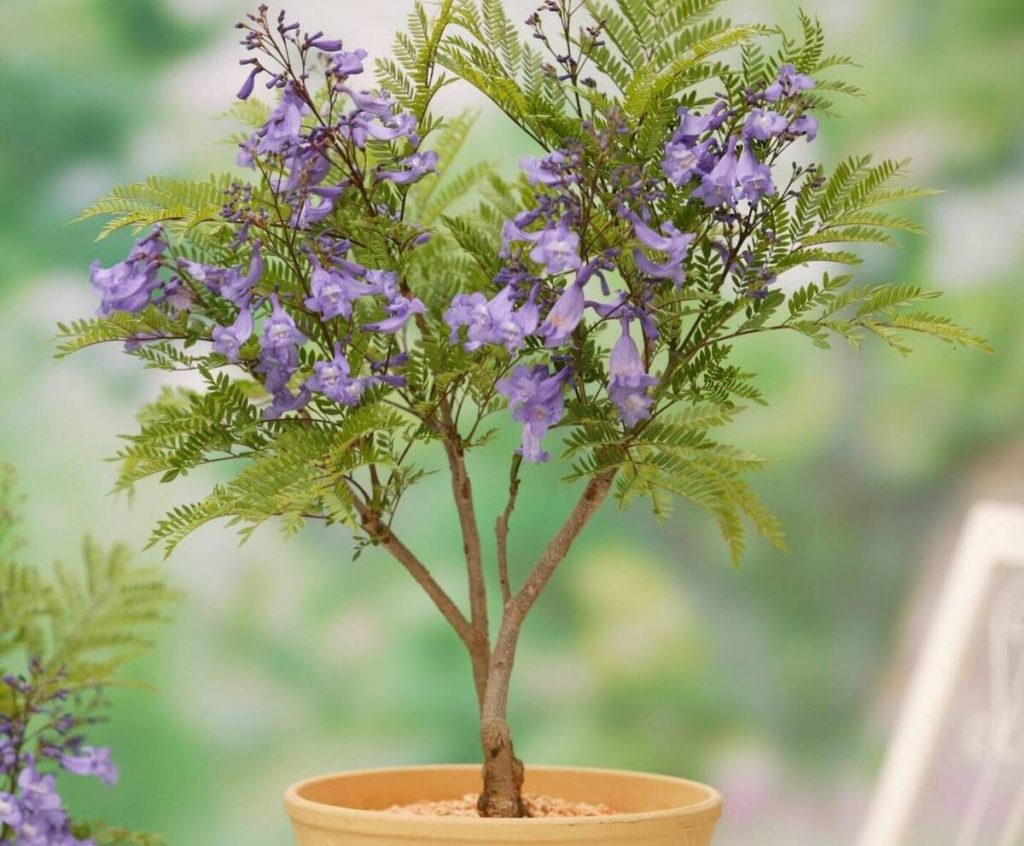
Benefits of Blue Jacaranda Bonsai
Blue Jacaranda Bonsai offers a range of benefits beyond its beauty. Here are some of the main benefits of Blue Jacaranda Bonsai:
- Aesthetic benefits: A touch of the natural beauty of the Blue Jacaranda Bonsai plant’s magnificent blue-violet blossoms may be added to any setting. It may be grown to fit any size or type of space and shown both indoors and outdoors.
- Improves air quality: Like all plants, the Blue Jacaranda Bonsai can help purify the air by absorbing toxins and releasing oxygen.
- Relieves stress: Studies have shown that spending time around plants can help reduce stress and improve overall well-being.
- Enhances focus and creativity: The act of caring for a bonsai tree can help improve focus and enhance creativity, making it a great hobby for those looking to improve their mental clarity.
Cultural and Historical Significance
Jacaranda indigo While bonsai originated in South America, it has also been introduced to Asia and Africa. Several cultures consider the tree to have spiritual and therapeutic properties as well as being a representation of fortitude, bravery, and resiliency.
Blue Jacaranda Bonsai, as a whole, is a lovely and advantageous plant that may enhance a space’s beauty while fostering health and well-being.
How to Care for Blue Jacaranda Bonsai
Your Blue Jacaranda Bonsai needs the right care to stay healthy and live a long time. Here are some suggestions for taking care of your plant:
- Light requirements: Blue Jacaranda Bonsai trees require full sun or partial shade. They should be placed in a spot that receives at least 6 hours of direct sunlight per day.
- Soil requirements: Blue Jacaranda Bonsai trees require well-draining soil that is rich in nutrients. A mixture of loam, peat moss, and sand is ideal.
- Watering requirements: Blue Jacaranda Bonsai trees should be thoroughly watered once a week or when the soil feels dry to the touch. Be sure not to overwater or underwater your plant, as this can lead to root rot or other issues.
- Fertilization requirements: Blue Jacaranda Bonsai trees should be fertilized with a balanced, slow-release fertilizer every 4-6 weeks during the growing season (spring and summer).
- Pruning and shaping: To maintain the shape and size of your Blue Jacaranda Bonsai, regular pruning and shaping are necessary. Use sharp, clean pruning shears to remove any dead or diseased branches and to shape the tree as desired.
Blue Jacaranda Bonsai Care Sheet
| Aspect | Care Tips |
| Sunlight | Blue Jacaranda Bonsai prefers full sun exposure for at least six hours a day. Young trees should be protected from direct sunlight until they develop a stronger root system. |
| Soil | Well-draining soil that is rich in organic matter is ideal for Blue Jacaranda Bonsai. Soil pH should be between 5.5-7.5. |
| Watering | The soil should be kept moist but not waterlogged. Watering frequency depends on the temperature and humidity levels of the environment. |
| Fertilizer | Blue Jacaranda Bonsai should be fertilized every two weeks during the growing season with a balanced fertilizer. |
| Pruning and shaping | Pruning and shaping should be done in the early spring or fall before new growth appears. |
Where to Buy Blue Jacaranda Bonsai
A Blue Jacaranda Bonsai can be purchased in a number of locations, including neighborhood nurseries and internet merchants. Be sure to take the following factors into account before purchasing a Blue Jacaranda Bonsai:
Size: Blue Jacaranda Bonsai trees come in a range of sizes, from small saplings to mature trees. Consider your space and your desired aesthetic when choosing the size of your tree.
Price: Blue Jacaranda Bonsai trees can vary in price depending on their size and age. Set a budget and look for trees that fit within your price range.
Quality: Choose a tree that doesn’t have any obvious problems like sickness or injury. Green, lustrous leaves are a must, as are sturdy, well-formed branches.
Bonsai trees crafted from blue jacarandas are not only visually appealing, but also beneficial in a number of ways. If you give your Blue Jacaranda Bonsai the attention it needs, it will flourish and provide beauty and delight to your home or business. Give your tree plenty of room to grow, some good soil with good drainage, and consistent watering and fertilizing.
Conclusion
The gorgeous Blue Jacaranda Bonsai provides its owner with a number of advantages. You may take pleasure in this lovely plant for many years to come with a little tender loving care. The Blue Jacaranda Bonsai is an excellent option if you want to lessen stress, increase the attractiveness of your home or business, or just improve the quality of the air. So go ahead and invest in a Blue Jacaranda Bonsai today and enjoy the satisfaction of nurturing this special and lovely tree.
FAQ:
Q: What is a Blue Jacaranda Bonsai?
A: Blue Jacaranda Bonsai is a kind of bonsai tree that is renowned for the stunning blue-purple blossoms and distinctive form that it possesses.
Q: What are the benefits of owning a Blue Jacaranda Bonsai?
A: Some benefits of owning a Blue Jacaranda Bonsai include improving air quality, reducing stress, enhancing focus and creativity, and being aesthetically pleasing.
Q: How do I care for my Blue Jacaranda Bonsai?
A: To care for your Blue Jacaranda Bonsai, you should provide it with adequate sunlight, well-draining soil, regular watering and fertilization, and pruning and shaping as needed.
Q: Where can I buy a Blue Jacaranda Bonsai?
A: A Blue Jacaranda Bonsai can be purchased from nearby nurseries or internet merchants. Take into account the tree’s size, cost, and quality before purchasing.
Q: How often should I water my Blue Jacaranda Bonsai?
A: Blue Jacaranda Bonsai trees should be watered thoroughly once a week or when the soil feels dry to the touch. Be sure not to overwater or underwater your plant.
Q: Can I grow a Blue Jacaranda Bonsai indoors?
A: Blue Jacaranda Bonsai trees require at least 6 hours of direct sunshine every day, therefore growing them inside may be tough unless you have access to a bright and sunny location.
Also Read:
Spruce Bonsai: A Symbol of Beauty and Tranquility for Your Loved Ones



